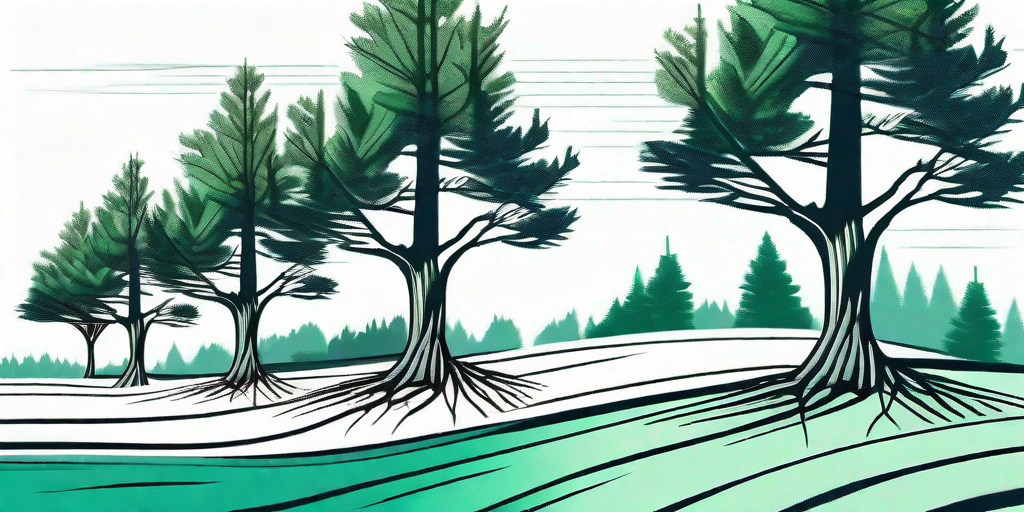
Ah, the majestic cedar tree! A symbol of strength, endurance, and a knack for surviving in even the harshest conditions. But what happens when you want to move one of these towering titans to a new location? Well, my dear friend, that's where the fun begins. Transplanting a cedar tree is no small task, but with a little bit of knowledge, a dash of patience, and a sprinkle of humor, we'll get you through it.
Understanding the Cedar Tree
Before we dive into the nitty-gritty of transplanting, let's take a moment to appreciate the cedar tree. Cedars are evergreen conifers, which means they keep their foliage all year round. They're known for their aromatic wood and their impressive height, reaching up to 60 feet tall. Now that's a lot of tree to move!
But don't let their size intimidate you. Cedar trees are surprisingly adaptable and can tolerate a range of soil types and climates. However, they do have a preference for well-drained soil and sunny locations. So, if you're planning to move your cedar to a shady, water-logged spot, you might want to reconsider.
When to Transplant
Timing is everything when it comes to transplanting cedar trees. The best time to do this is in late winter or early spring, before new growth starts. This gives the tree a chance to establish its roots in the new location before it has to focus on growing.
However, if you missed this window, don't despair. Cedar trees can also be transplanted in the fall, after the heat of summer has passed but before the ground freezes. Just make sure to give your tree plenty of water to help it settle in.
How to Transplant
Step 1: Prepare the New Site
Before you even think about digging up your cedar, you need to prepare its new home. Choose a sunny location with well-drained soil. Dig a hole that's twice as wide and just as deep as the root ball of your tree. This gives the roots plenty of room to spread out and establish themselves.
Step 2: Dig Up the Tree
Now comes the hard part - digging up the tree. Start by digging a trench around the tree, about 3 feet away from the trunk. This should encompass the majority of the root system. Then, carefully undercut the root ball, trying to keep as many roots intact as possible.
Step 3: Move the Tree
Once the tree is free, it's time to move it to its new location. This is easier said than done, especially with larger trees. You might need to enlist the help of a few strong friends or even a tree moving company. Once the tree is in its new home, backfill the hole with soil, making sure there are no air pockets.
Step 4: Aftercare
After the tree is planted, it's important to give it plenty of water and mulch the area to conserve moisture. Keep an eye on the tree over the next few weeks and water it regularly. With a bit of luck and a lot of care, your cedar tree will thrive in its new location.
Common Mistakes to Avoid
Transplanting a cedar tree is a big job, and it's easy to make mistakes. One common error is not preparing the new site properly. Remember, cedar trees like well-drained soil and plenty of sun. If you plant your tree in a shady, water-logged spot, it's unlikely to thrive.
Another mistake is not giving the tree enough water after transplanting. This can cause the tree to go into shock and die. So, make sure to keep the soil moist, but not waterlogged, for the first few weeks after transplanting.
Frequently Asked Questions
Can I transplant a mature cedar tree?
Yes, but it's a big job. Mature cedar trees have extensive root systems, and digging them up without damaging the roots can be a challenge. You'll also need a lot of manpower or heavy machinery to move the tree. If you're not up for the challenge, consider hiring a professional.
How long does it take for a transplanted cedar tree to establish?
It can take a year or more for a transplanted cedar tree to fully establish in its new location. During this time, it's important to give the tree plenty of water and monitor it for signs of stress.
What if my transplanted cedar tree is dying?
If your transplanted cedar tree is showing signs of stress, like yellowing leaves or drooping branches, it may be in shock. Try giving it more water and adding a layer of mulch around the base to conserve moisture. If the tree doesn't improve, it may be best to consult with a professional.
Conclusion
Transplanting a cedar tree is no small task, but with a bit of knowledge and a lot of patience, it's definitely doable. Just remember to choose the right location, prepare the site properly, and give the tree plenty of water after transplanting. With a bit of luck, your cedar tree will be reaching new heights in no time!
So, go forth, brave gardener, and may your cedar tree transplanting adventures be filled with success, laughter, and minimal back pain. Remember, every towering cedar started as a humble seedling. Who knows where your transplanted tree might end up?















